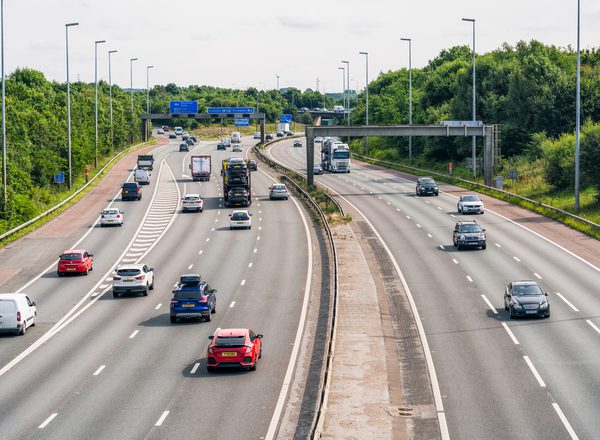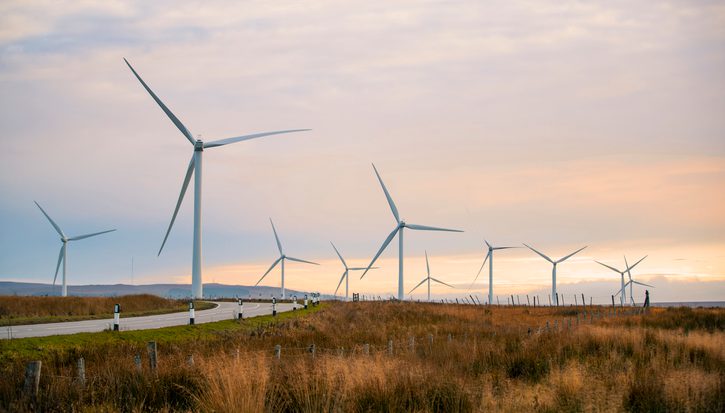
Making every pound count: Why new roads are not the route to prosperity
Article
IPPR has made the case for well-designed, high-quality public investment many times.
From renewable energy to active travel infrastructure, from nature restoration to home heating, there are key areas where investment can return economic, social and environmental value. This investment will support the country to meet the challenges it is facing by building the foundations of healthy, well-connected, prosperous neighbourhoods, and ultimately, a strong economy.
Particularly in the context of a constrained fiscal landscape, investments should be considered strategic decisions that help meet the government's five missions, while also being assessed for their value for money. While investment in public services is urgently required, it is necessary to disentangle investment in roads from other forms of transport or public services. Although historically road building was associated with growth, in a country with an established and wide-reaching road network, combined with shifting patterns in home working, this link is less clear.
Investments should be considered strategic decisions that help meet the government's five missions, while also being assessed for their value for money
In this piece, we argue that investment in new road building, over other forms of transport investment, does not deliver good value for money, help meet Labour’s missions, deliver the emissions savings needed to reach net zero, or safeguard nature. Instead, this money should be redirected away from capital spending on new roads towards renewing our existing road network, public transport and active travel. These investments have the potential to unlock economic growth while supporting the health, opportunity, and safer streets missions, alongside decarbonisation targets.
Investment in new road projects are not the best value for money
The secretary of state for transport announced an internal review of DfT’s capital spending shortly after taking office. This is a welcome first step from the new government to meet their transport objectives, offers an opportunity to re-evaluate the several unfinanced transport commitments inherited from the previous government, and highlight those road investments that don’t represent good value for money or that undermine the government’s missions. This review should be published once completed.
As part of the chancellor’s July statement on public spending, the government paused or cancelled a number of new roads inherited from the last government, including the A303 Stonehenge scheme, in recognition of their poor value for money. We welcome these decisions, and it sets a strong precedent that the review will identify transport schemes that offer value for money, and are aligned with Labour’s five missions.
The A303 was not an outlier. Returns on investment (also referred to as the BCR, benefit cost ratio) are one of the tools government uses to make investment decisions. BCRs have been previously criticised as a “poor tool” by which to make these decisions, particularly for transport infrastructure and the “spatial aspect of growth”, favouring investment in places that are already productive and limiting long-term strategic decisions.
Investment benefits from public transport can be up to £4.55 for every £1 spent
Despite these criticisms, significant weight is placed on BCRs when making investment decisions. However, even under these conditions, road building schemes tend to have low BCRs when compared to other infrastructure investment. Overall costs of roadbuilding schemes often spiral, there are numerous recent examples of new road building projects with price-tags that continue to rise, while the BCR gets worse. In some cases, the BCR drops below 1, meaning there is no return on investment.
The Lower Thames Crossing has an initial BCR of 0.48, meaning the scheme will cost more than it is expected to deliver in returns. When recalculating an adjusted BCR to include wider economic benefits (for example journey time reliability and agglomeration effects, but not wider costs such as induced traffic and therefore not the impact of induced traffic on emissions, air quality or safety), this rises to 1.22, a return of £1.22 for every £1 invested, and is projected to cost at least £9 billion. DfT classifies this as low value for money. The A66 Northern Trans Pennine scheme has an adjusted BCR that is 0.92, suggesting that even the wider economic benefits do not deliver a return on investment for this project.
The government are expected to make a decision on the third Road Investment Strategy (RIS 3) following the autumn statement. As part of this Labour should engage with the report on strategic road investment from the Transport Select Committee which called for the third and fourth Road Investment Strategies (RIS 3 and RIS 4) to prioritise investment in the “maintenance, renewal and resilience of existing assets over brand new projects”, a call echoed by the RAC. The NAO, in its assessment of the condition and maintenance of local roads, stated that maintenance has a BCR of 7:1.
Alongside maintenance, ensuring the resilience of our road network is essential in the face of climate change, which will increase the risk of flooding and extreme heat. Flooding incidences are already rising on the strategic roads network, and the resilience of the network to drainage is declining, decreasing by 5 per cent between 2024 and 2023.
Active travel schemes have an average BCR of 5.62, with considerably lower capital costs than roadbuilding schemes, and benefits that tend to go up over time as usage increases. A considerable contributor to the returns on investment associated with active travel infrastructure are health benefits associated with increased activity. Less traffic also leads to safer roads with fewer casualties, further reducing pressure on the NHS. Conversely, road building schemes have a negative impact on local communities due to increased air and noise pollution, collisions, and a host of other negative externalities.
Research earlier this year suggested that the investment benefits from public transport can be up to £4.55 for every £1 spent, and this can be higher for specific schemes. The latest business case for Ely rail junction suggests benefits of £4.89 per £1 invested, would remove 98,000 HGVs from our roads each year, improve safety, reduce congestion and save 1.7m tonnes CO2. This doesn’t include the additional benefits associated with access to public transport such as social inclusion, access to the job market, education or healthcare.
For a government that has clear ambitions on growth, net zero, health and opportunity, road building is not a good investment. Instead, investment in other parts of the transport system can unlock outcomes that support multiple mission objectives.
Transport investment to promote social mobility, improve health and reduce emissions
Outlining her transport objectives, the secretary of state said alongside improving bus services and the rail network, delivering greener and better integrated transport networks, there is an aim to “transform infrastructure to work for the whole country, promoting social mobility and tackling regional inequality”. This recognition that, if done well, transport can be a tool to address multiple objectives is welcomed.
There is also a valuable opportunity to address Labour’s health goals through mission-driven transport investment. IPPR’s recent Commission on Health and Prosperity identified active travel infrastructure and public transport two of its nine foundational assets for healthy places. Transport has a role in promoting better health, and making investment decisions that take this into account, would be a powerful and lasting legacy for this government.
[The aim is to] transform infrastructure to work for the whole country, promoting social mobility and tackling regional inequality
Access to a car among the poorest quintile is 56 per cent, compared to an average of 78 per cent, and 85 per cent among the highest earning quintile. New roads investment will do nothing for transport-related social exclusion, particularly among those living on the lowest incomes and without access to a car. Investment in public transport and active travel goes further to promote social inclusion and tackle regional inequality, and polling has shown that people want to see more investment in public transport than in new road schemes.
There is an urgent need to green the transport system: transport emissions have remained stubbornly static for 30 years. The existing Transport Decarbonisation Plan will not deliver the emissions savings required to meet our climate commitments, despite increasing electrification of the car fleet. Investment decisions must take into account the impact of road building on the UK’s ability to meet its climate commitments. In its 2023 Progress in Reducing Emissions report to parliament, the Climate Change Committee called for policies that limit traffic growth, including carefully considering road-building decisions.
The climate, health or social mobility impacts of transport decisions are too often overlooked, and frequently only considered in later stages of transport appraisals. These objectives are best met through investment in public transport, active travel links, road maintenance and safety measures. Reflecting these impacts better in investment decisions might involve an update to the appraisal process, the inclusion of climate impacts in the review being undertaken by government, or through the appointment of an independent panel.
A new approach to transport decision-making
The narrative that new roads equal growth must be consigned to history. When Britain's road network was considerably less developed than it is today and people couldn’t work from home, there was a case that road building was necessary for economic growth. But this is not the case for Britain now, where we have a well-developed road network, and increased flexibility for people to work from home.
For decades, decisions about transport investment have been informed by road capacity projections based on predicted traffic growth. These approaches, and the reluctance to acknowledge or factor induced traffic into decision making, has led to congested, polluted streets and car-dependent developments. There is no reason that the social impacts of transport could not be better factored into the appraisal process.
For decades, decisions about transport investment have been informed by road capacity projections based on predicted traffic growth
Transport investment has to be mission-led and outcomes focused. We strongly support the proposal in the National Planning Policy Framework (NPPF) consultation to move away from a “predict and provide” approach to transport infrastructure towards a vision-led approach, but as outlined in previous work at IPPR, there is still work to be done to better integrate transport and planning. The priorities set out by the Secretary of State point towards a vision for the transport system that acknowledges the urgent need to reduce emissions from the sector, whilst also improving social inclusion and reducing transport poverty.
As recommend by IPPR, the government have promised to develop the country’s first national integrated transport strategy by summer 2025. This should build on existing announcements around bus and rail to outline modal shift targets, long-term funding for active travel, and road maintenance, all of which are necessary to deliver sustainable growth in the transport sector. Ultimately, this strategy must set out we want the future of travel to look like and what goals the transport system should be working to.
You might also like ...

A people-focussed future for transport in England
Our findings from three roundtables on the impact of transport in people’s lives and the priorities for change.
The sixth carbon budget: The first plan without consensus
For decades, UK climate action was cross-party, and consensus meant policy looked different to politically competitive issues like tax.
Skills passports: An essential part of a fair transition
This month, government will publish its Clean Energy Workforce Strategy. This plan covers two aims. First, filling the growing demand for skills in clean energy industries is essential to keep on track to reach the government’s clean power…